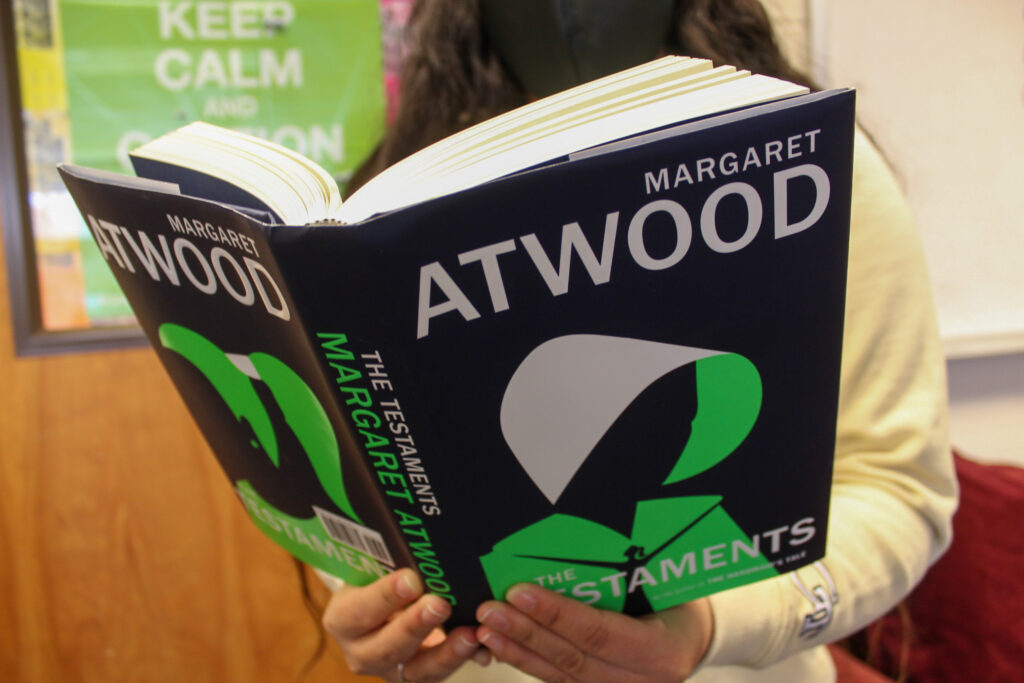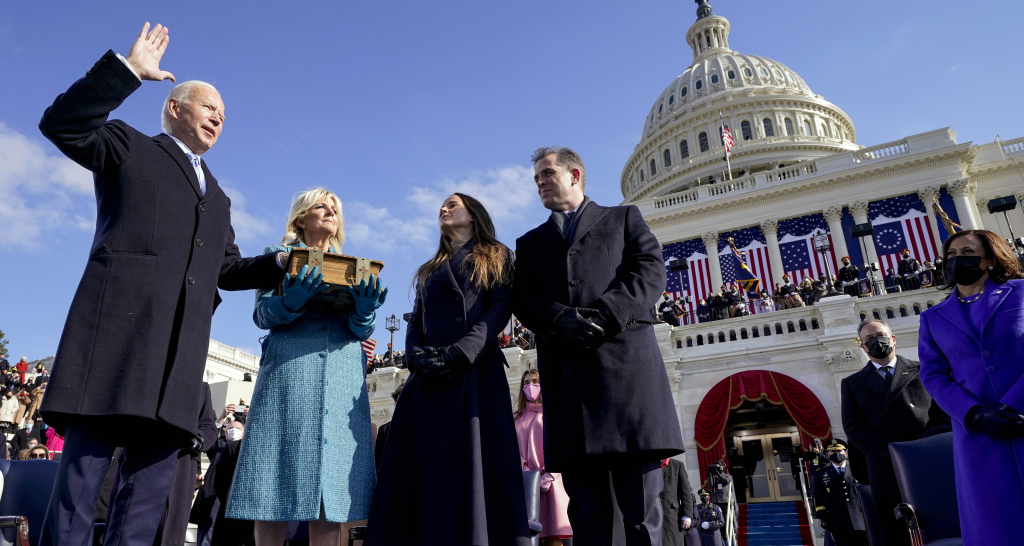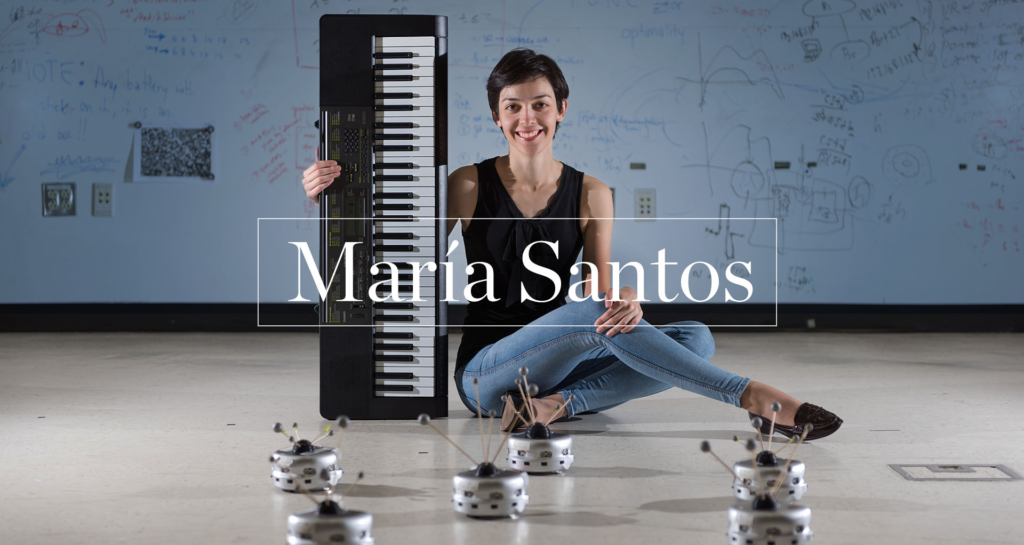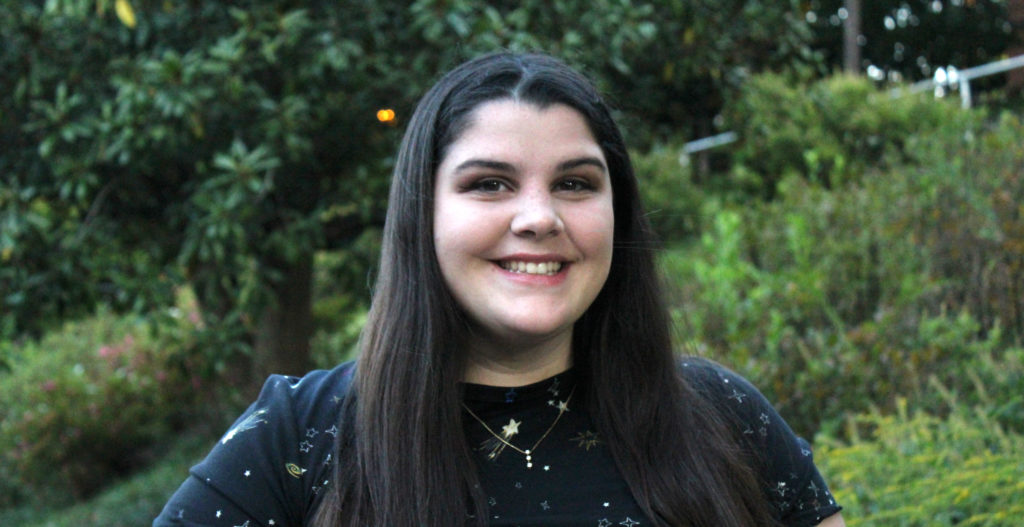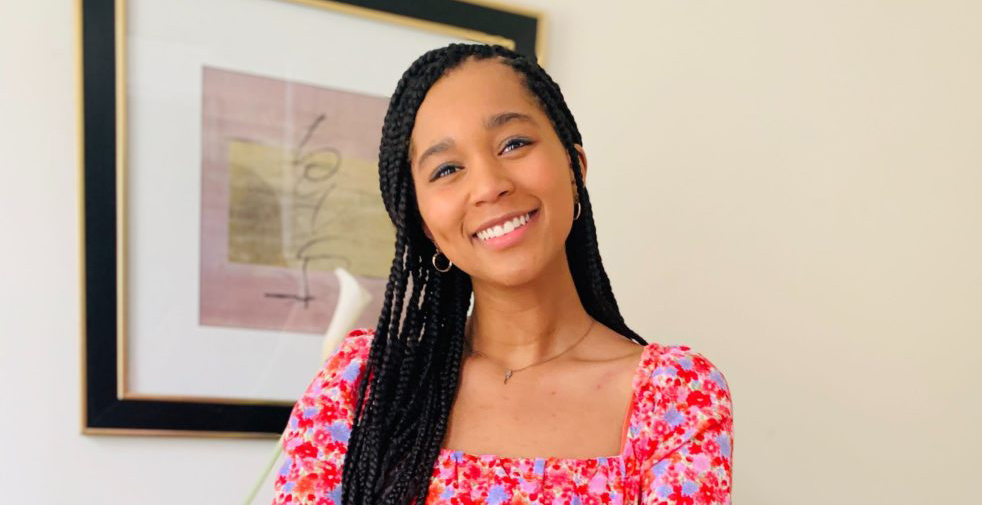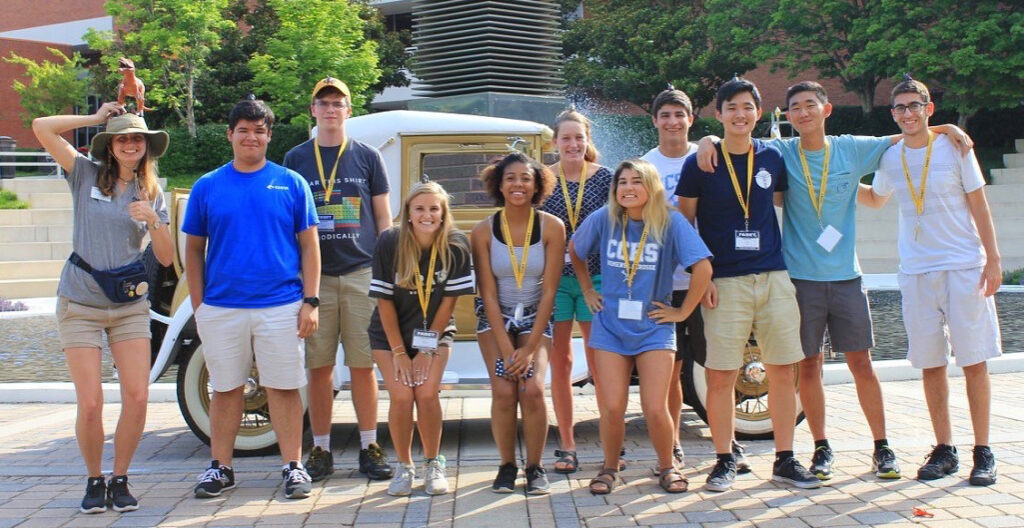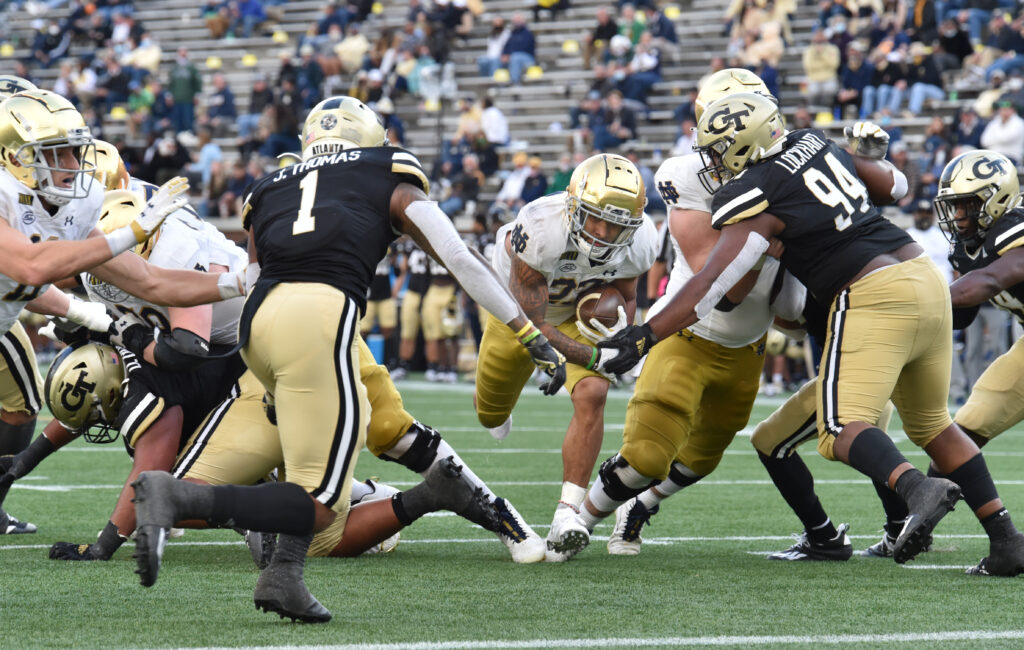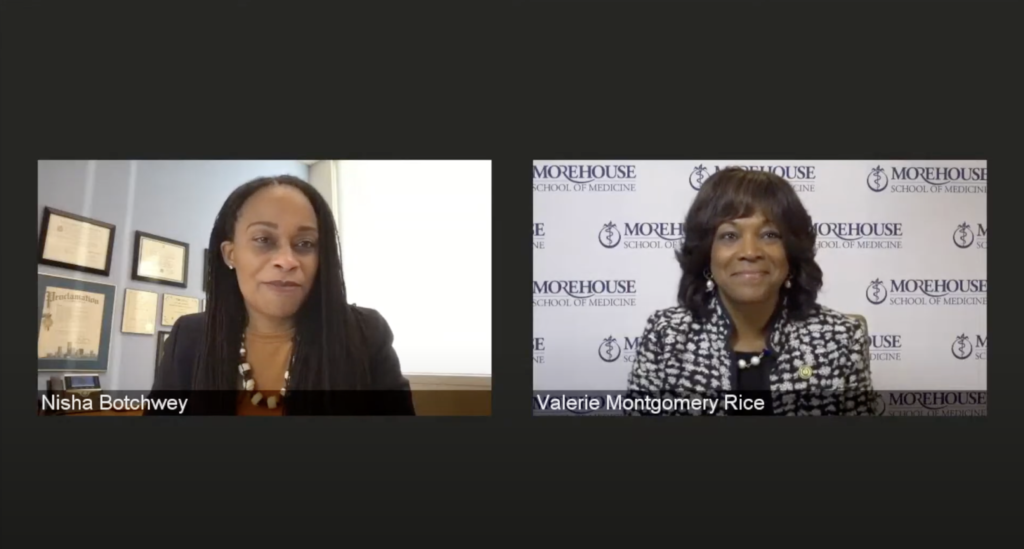
With almost 10% of the United States population having received the first dose of the COVID-19 vaccine, the healthcare system is facing an unprecedented challenge.
On Wednesday, Feb. 3, Dr. Nisha Botchwey, Associate Professor of City & Regional Planning, moderated a discussion with Dr. Valerie Montgomery Rice as part of the Impact Speaker Series about Montgomery Rice’s career in the healthcare field and existing disparities communities of color face that the pandemic has exacerbated.
Montgomery Rice, CHEM ‘83, is the President and Dean of the Morehouse School of Medicine and the founding director of the Center for Women’s Health Research at Meharry Medical College in 2003.
The center focuses on researching diseases that disproportionately impact women of color.
Its founding came from findings of Montgomery Rice’s research.
“One of the things that I started to figure out early on was that women of color were disproportionately impacted by some diseases,” Montgomery Rice said. “We tended to have more fibroids disease, we tended to have more tubal disease and we tended to have more endocrine disorders that prevented us from becoming pregnant. And I started to delve into why that was the case.”
Montgomery Rice’s research in reproductive endocrinology and infertility found a host of reasons for these disparities including lack of access to quality care in a timely manner.
While researching these topics, Montgomery Rice was asked to become the Chair of OB-GYN at Meharry Medical College.
“We were at one of the most historically Black medical schools,” Montgomery Rice said. “Why don’t we really focus on what are the root causes of the disparities that we see in women’s health?”
Montgomery Rice applied for a $10 million National Institutes of Health (NIH) grant and began to research topics such as reproductive changes, breast cancer and pregnancy.
The main point of all the research was to answer the question of “Why?”
“There were not a lot of people interested in the why of it,” Montgomery Rice said. “They were more so interested in ‘Okay, what can we do to treat it?’ But we were talking about the why.”
“And I think for the number of times that I was told no, I was pushing toward yes, and that resilience and grit, a large part of it were some of the challenges that I had at Georgia Tech.”
While at Tech, Montgomery Rice began her undergraduate education as a CHBE major.
However, she realized during her fourth-year she was dissatisfied with her career path and decided to apply to and attend medical school instead.
“One of the things that I am most proud of [is] that I thought I was empowered enough to change my mind,” Montgomery Rice said. “Because really, I had a job offer. I had co-oped for at least six quarters, I think, and so I was well on my way to becoming a chemical engineer, but I knew that I wasn’t happy.”
After completing her undergraduate degree instead in CHEM to satisfy the prerequisite courses for medical school, Montgomery Rice was accepted into and attended Harvard Medical School.
Discipline has been a habit that Montgomery Rice has carried throughout her career.
“I became the dean at Meharry Medical College. I was the youngest dean in the country, and so I think I was pretty proud of that,” Montgomery Rice said. “… Then to come here [Morehouse School of Medicine] and be named as the Dean and President … I was the first woman of color to be named to lead a free standing medical school.”
Throughout Montgomery Rice’s career, a tool she has used when collaborating is finding similarities to understand others’ stories.
A relevant example of this is the current vaccine distribution and emphasizing the role of different agencies and groups in earning the trust of communities.
“How do we get people to vaccine acceptance? And that begins with acknowledging people’s concerns about mistrust and distrust with the health system and then answering their questions. And when we don’t know, saying we don’t know, but then bringing them back to the data to say ‘Here … these vaccines are another thing in our toolkit to fight this deadly disease,’” Montgomery Rice said.
To ensure a successful rollout, Montgomery Rice emphasized the cognitive diversity at the table. While mathematicians and statisticians are needed to calculate the number of vaccines needed in a community, there are many more necessary parties.
“It doesn’t become a vaccination until you get it in somebody’s arm, so you need to have the community activists, you need to have people who look like the people who you’re trying to get the vaccine in. You need to have people who can talk to people and engage them in a culturally and a linguistic way, such that they understand,” Montgomery Rice said.
Additionally, the historical context must be acknowledged.
“You don’t let that history hold you back from achieving the future, and so it takes people who have diverse experiences and who have diverse thoughts to help us solve these complex problems,” Montgomery Rice said.
One attendee asked about how students can familiarizes themselves to inequalities in the healthcare system. Montgomery Rice recommended students volunteer in a health system.
“Observe the experiences that people have and ask yourself, are the differences that you see in people’s experience based on some physical appearance that the person had,” Montgomery Rice said. “Is it based on something that’s demographically defined?”
Then, she recommends thinking about how you can positively contribute to the solution.
Another attendee asked Montgomery Rice about her experiences of implicit bias in the healthcare industry.
“The reason why you see so much chronicity of that in the Black community is because of the long standing structural and racial barriers to access to care, quality of care, access to food, access to the conditions that allow you to exercise and have preventive health measures,” Montgomery Rice said. “It’s structural and so, I have tried to live my life by recognizing those things, pointing them out and then bringing diverse people around the table for us to create solutions.”
Montgomery Rice and Botcheway agreed that white people at those tables must ask the question of who is not present and whose experience needs to be brought for a complete perspective.
“When you recognize that you have white privilege, and that it may be harmful to another group, what do you do differently that changes the circumstance?” Montgomery Rice said.
The final piece of advice Montgomery Rice gave to attendees is the power of empathy when working with others.
“Why is it that you feel so adamant about this and cannot look at it from a different perspective? What am I missing?” Montgomery Rice said.
A full recording of the complete talk can be found on the Georgia Tech ISLI YouTube page.
“There were not a lot of people interested in the why of it,” Montgomery Rice said. “They were more so interested in ‘Okay, what can we do to treat it?’ But we were talking about the why.”
“And I think for the number of times that I was told no, I was pushing toward yes, and that resilience and grit, a large part of it were some of the challenges that I had at Georgia Tech.”
While at Tech, Montgomery Rice began her undergraduate education as a CHBE major.
However, she realized during her fourth-year she was dissatisfied with her career path and decided to apply to and attend medical school instead.
“One of the things that I am most proud of [is] that I thought I was empowered enough to change my mind,” Montgomery Rice said. “Because really, I had a job offer. I had co-oped for at least six quarters, I think, and so I was well on my way to becoming a chemical engineer, but I knew that I wasn’t happy.”
After completing her undergraduate degree instead in CHEM to satisfy the prerequisite courses for medical school, Montgomery Rice was accepted into and attended Harvard Medical School.
Discipline has been a habit that Montgomery Rice has carried throughout her career.
“I became the dean at Meharry Medical College. I was the youngest dean in the country, and so I think I was pretty proud of that,” Montgomery Rice said. “… Then to come here [Morehouse School of Medicine] and be named as the Dean and President … I was the first woman of color to be named to lead a free standing medical school.”
Throughout Montgomery Rice’s career, a tool she has used when collaborating is finding similarities to understand others’ stories.
A relevant example of this is the current vaccine distribution and emphasizing the role of different agencies and groups in earning the trust of communities.
“How do we get people to vaccine acceptance? And that begins with acknowledging people’s concerns about mistrust and distrust with the health system and then answering their questions. And when we don’t know, saying we don’t know, but then bringing them back to the data to say ‘Here … these vaccines are another thing in our toolkit to fight this deadly disease,’” Montgomery Rice said.
To ensure a successful rollout, Montgomery Rice emphasized the cognitive diversity at the table. While mathematicians and statisticians are needed to calculate the number of vaccines needed in a community, there are many more necessary parties.
“It doesn’t become a vaccination until you get it in somebody’s arm, so you need to have the community activists, you need to have people who look like the people who you’re trying to get the vaccine in. You need to have people who can talk to people and engage them in a culturally and a linguistic way, such that they understand,” Montgomery Rice said.
Additionally, the historical context must be acknowledged.
“You don’t let that history hold you back from achieving the future, and so it takes people who have diverse experiences and who have diverse thoughts to help us solve these complex problems,” Montgomery Rice said.
One attendee asked about how students can familiarizes themselves to inequalities in the healthcare system. Montgomery Rice recommended students volunteer in a health system.
“Observe the experiences that people have and ask yourself, are the differences that you see in people’s experience based on some physical appearance that the person had,” Montgomery Rice said. “Is it based on something that’s demographically defined?”
Then, she recommends thinking about how you can positively contribute to the solution.
Another attendee asked Montgomery Rice about her experiences of implicit bias in the healthcare industry.
“The reason why you see so much chronicity of that in the Black community is because of the long standing structural and racial barriers to access to care, quality of care, access to food, access to the conditions that allow you to exercise and have preventive health measures,” Montgomery Rice said. “It’s structural and so, I have tried to live my life by recognizing those things, pointing them out and then bringing diverse people around the table for us to create solutions.”
Montgomery Rice and Botcheway agreed that white people at those tables must ask the question of who is not present and whose experience needs to be brought for a complete perspective.
“When you recognize that you have white privilege, and that it may be harmful to another group, what do you do differently that changes the circumstance?” Montgomery Rice said.
The final piece of advice Montgomery Rice gave to attendees is the power of empathy when working with others.
“Why is it that you feel so adamant about this and cannot look at it from a different perspective? What am I missing?” Montgomery Rice said.
A full recording of the complete talk can be found on the Georgia Tech ISLI YouTube page.
Additionally, the historical context must be acknowledged.
“You don’t let that history hold you back from achieving the future, and so it takes people who have diverse experiences and who have diverse thoughts to help us solve these complex problems,” Montgomery Rice said.
One attendee asked about how students can familiarizes themselves to inequalities in the healthcare system. Montgomery Rice recommended students volunteer in a health system.
“Observe the experiences that people have and ask yourself, are the differences that you see in people’s experience based on some physical appearance that the person had,” Montgomery Rice said. “Is it based on something that’s demographically defined?”
Then, she recommends thinking about how you can positively contribute to the solution.
Another attendee asked Montgomery Rice about her experiences of implicit bias in the healthcare industry.
“The reason why you see so much chronicity of that in the Black community is because of the long standing structural and racial barriers to access to care, quality of care, access to food, access to the conditions that allow you to exercise and have preventive health measures,” Montgomery Rice said. “It’s structural and so, I have tried to live my life by recognizing those things, pointing them out and then bringing diverse people around the table for us to create solutions.”
Montgomery Rice and Botcheway agreed that white people at those tables must ask the question of who is not present and whose experience needs to be brought for a complete perspective.
“When you recognize that you have white privilege, and that it may be harmful to another group, what do you do differently that changes the circumstance?” Montgomery Rice said.
The final piece of advice Montgomery Rice gave to attendees is the power of empathy when working with others.
“Why is it that you feel so adamant about this and cannot look at it from a different perspective? What am I missing?” Montgomery Rice said.
A full recording of the complete talk can be found on the Georgia Tech ISLI YouTube page.

